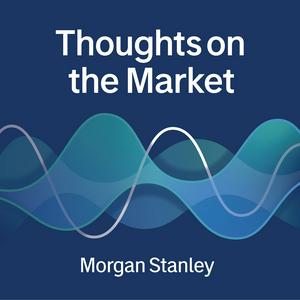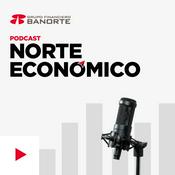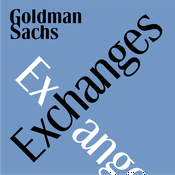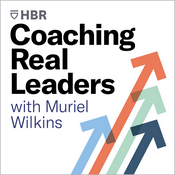1530 episodios

Special Encore: 2026 Global Outlook: Slower Growth and Inflation
24/12/2025 | 10 min
Original Release Date: November 17, 2025In the first of a two-part episode presenting our 2026 outlooks, Chief Global Cross-Asset Strategist Serena Tang has Chief Global Economist Seth Carpenter explain his thoughts on how economies around the world are expected to perform and how central banks may respond.Read more insights from Morgan Stanley.----- Transcript -----Serena Tang: Welcome to Thoughts on the Market. I'm Serena Tang, Morgan Stanley's Chief Global Cross-Asset Strategist. Seth Carpenter: And I'm Seth Carpenter, Morgan Stanley's Global Chief Economist. Serena Tang: Today, we'll focus on [the] all-important macroeconomic backdrop. Serena Tang: It's Monday, November 17th at 10am in New York. So, Seth, 2025 has been a year of transition. Global growth slowed under the weight of tariffs and policy uncertainty. Yet resilience in consumer spending and AI driven investments kept recession fears at bay. Your team has published its economic outlook for 2026. So, what's your view on global growth for the year ahead? Seth Carpenter: We really think next year is going to be the global economy slowing down a little bit more just like it did this year, settling into a slower growth rate. But at the same time, we think inflation is going to keep drifting down in most of the world. Now that anodyne view, though, masks some heterogeneity around the world; and importantly, some real uncertainty about different ways things could possibly go. Here in the U.S., we think there is more slowing to come in the near term, especially the fourth quarter of this year and the beginning of next year. But once the economy works its way through the tariffs, maybe some of the lagged effects of monetary policy, we'll start to see things pick up a bit in the second half of the year. China's a different story. We see the really tepid growth there pushed down by the deflationary spiral they've been in. We think that continues for next year, and so they're probably not quite going to get to their 5 percent growth target. And in Europe, there's this push and pull of fiscal policy across the continent. There's a central bank that thinks they've achieved their job in terms of inflation, but overall, we think growth there is, kind of, unremarkable, a little bit over 1 percent. Not bad, but nothing to write home about at all. So that's where we think things are going in general. But I have to say next year, may well be a year for surprises. Serena Tang: Right. So where do you see the biggest drivers of global growth in 2026, and what are some of the key downside risks? Seth Carpenter: That's a great question. I really do think that the U.S. is going to be a real key driver of the story here. And in fact – and maybe we'll talk about this later – if we're wrong, there's some upside scenarios, there's some downside scenarios. But most of them around the world are going to come from the U.S. Two things are going on right now in the U.S. We've had strong spending data. We've also had very, very weak employment data. That usually doesn't last for very long. And so that's why we think in the near term there's some slowdown in the U.S. and then over time things recover. We could be wrong in either direction. And so, if we're wrong and the labor market sending the real signal, then the downside risk to the U.S. economy – and by extension the global economy – really is a recession in the U.S. Now, given the starting point, given how low unemployment is, given the spending businesses are doing for AI, if we did get that recession, it would be mild. On the other hand, like I said, spending is strong. Business spending, especially CapEx for AI; household spending, especially at the top end of the income distribution where wealth is rising from stocks, where the liability side of the balance sheet is insulated with fixed rate mortgages. That spending could just stay strong, and we might see this upside surprise where the spending really dominates the scene. And again, that would spill over for the rest of the world. What I don't see is a lot of reason to suspect that you're going to get a big breakout next year to the upside or the downside from either Europe or China, relative to our baseline scenarios. It could happen, but I really think most of the story is going to be driven in the U.S. Serena Tang: So, Seth, markets have been focused on the Fed, as it should. What is the likely path in 2026 and how are you thinking about central bank policy in general in other regions? Seth Carpenter: Absolutely. The Fed is always of central importance to most people in markets. Our view – and the market's view, I have to say, has been evolving here. Our view is that the Fed's actually got a few more rate cuts to get through, and that by the time we get to the middle of next year, the middle of 2026, they're going to have their policy rate down just a little bit above 3 percent. So roughly where the committee thinks neutral is. Why do we think that? I think the slowing in the labor market that we talked about before, we think there's something kind of durable there. And now that the government shutdown has ended and we're going to start to get regular data prints again, we think the data are going to show that job creation has been below 50,000 per month on average, and maybe even a few of them are going to get to be negative over the next several months. In that situation, we think the Fed's going to get more inclination to guard against further deterioration in the labor market by keeping cutting rates and making sure that the central bank is not putting any restraint on the economy. That's similar, I would say, to a lot of other developed markets’ central banks. But the tension for the ECB, for example, is that President Lagarde has said she thinks; she thinks the disinflationary process is over. She thinks sitting at 2 percent for the policy rate, which the ECB thinks of as neutral, then that's the right place for them to be. Our take though is that the data are going to push them in a different direction. We think there is clearly growth in Europe, but we think it's tepid. And as a result, the disinflationary process has really still got some more room to run and that inflation will undershoot their 2 percent target, and as a result, the ECB is probably going to cut again. And in our view, down to about 1.5 percent. Big difference is in Japan. Japan is the developed market central bank that's hiking. Now, when does that happen? Our best guess is next month in December at the policy meeting. We've seen this shift towards reflation. It hasn't been smooth, hasn't been perfectly linear. But the BoJ looks like they're set to raise rates again in December. But the path for inflation is going to be a bit rocky, and so, they're probably on hold for most of 2026. But we do think eventually, maybe not till 2027, they get back to hiking again – so that Governor Ueda can get the policy rate back close to neutral before he steps down. Serena Tang: So, one of the main investor debates is on AI. Whether it's CapEx, productivity, the future of work. How is that factoring into your team's view on growth and inflation for the next year? Seth Carpenter: Yeah, I mean that is absolutely a key question that we get all the time from investors around the world. When I think about AI and how it's affecting the economy, I think about the demand side of the economy, and that's where you think about this CapEx spending – building data centers, buying semiconductors, that sort of thing. That's demand in the economy. It's using up current resources in the economy, and it's got to be somewhat inflationary. It's part of what has kept the U.S. economy buoyant and resilient this year – is that CapEx spending. Now you also mentioned productivity, and for me, that's on the supply side of the economy. That's after the technology is in place. After firms have started to adopt the technology, they're able to produce either the same amount with fewer workers, or they're able to produce more with the same amount of workers. Either way, that's what productivity means, and it's on the supply side. It can mean faster growth and less inflation. I think where we are for 2026, and it's important that we focus it on the near term, is the demand side is much more important than the supply side. So, we think growth continues. It's supported by this business investment spending. But we still think inflation ends 2026, notably above the Fed's inflation target. And it's going to make five, five and a half years that we've been above target. Productivity should kick in. And we've written down something close to a quarter percentage point of extra productivity growth for 2026, but not enough to really be super disinflationary. We think that builds over time, probably takes a couple of years. And for example, if we think about some of the announcements about these data centers that are being built, where they're really going to unleash the potential of AI, those aren't going to be completed for a couple of years anyway. So, I think for now, AI is dominating the demand side of the economy. Over the next few years, it's going to be a real boost to the supply side of the economy. Serena Tang: So that makes a lot of sense to me, Seth. But can you put those into numbers? Seth Carpenter: Sure, Serena totally. In numbers, that's about 3 percent growth. A little bit more than that for global GDP growth on like a Q4-over-Q4 basis. But for the U.S. in particular, we've got about 1.75 percent. So that's not appreciably different from what we're looking for this year in 2025. But the number really, kind of, masks the evolution over time. We think the front part of the year is going to be much weaker. And only once we get into the second half of next year will things start to pick up. That said, compared to where we were when we did the midyear outlook, it's actually a notable upgrade. We've taken real signal from the fact that business spending, household spending have both been stronger than we think. And we've tried to add in just a little bit more in terms of productivity growth from AI. Layer on top of that, the Fed who's been clearly willing to start to ease interest rates sooner than we thought at the time of the mid-year outlook – all comes together for a little bit better outlook for growth for 2026 in the U.S. Serena Tang: Seth thanks so much for taking the time to talk. Seth Carpenter: Serena, it is always my pleasure to get to talk to you. Serena Tang: And thanks for listening. Please be sure to tune into the second half of our conversation tomorrow to hear how we're thinking about investment strategy in the year ahead. If you enjoy Thoughts on the Market, please leave us a review wherever you listen and share the podcast with a friend or colleague today.

Will the Data Center Boom Impact Your Wallet?
23/12/2025 | 10 min
Our Thematic and Equity Strategist Michelle Weaver and Power, Utilities, and Clean Tech Analyst David Arcaro discuss how investments in AI data centers are affecting electricity bills for U.S. consumers.Read more insights from Morgan Stanley.----- Transcript -----Michelle Weaver: Welcome to Thoughts on the Market. I'm Michelle Weaver, Morgan Stanley's U.S. Thematic and Equity Strategist.David Arcaro: And I'm Dave Arcaro, U.S. Power, Utilities, and Clean Tech Analyst.Michelle Weaver: Today, a hot topic. Are data centers’ raising your electricity bills?It's Tuesday, December 23rd at 10am in New York.Most of us have probably noticed our electricity bills have been creeping up. And it's putting pressure on U.S. consumers, especially with higher prices and paychecks not keeping pace. More and more people are pointing to data centers as the reason behind these rising costs, but the story isn't that simple.Regional differences, shifting policies and local utility responses are all at play here. Dave, there's no doubt that data centers are becoming a much bigger part of the story when it comes to U.S. electricity demand. For listeners who might not follow these numbers every day, could you break down how data centers' share of overall electricity use is expected to grow over the next 10 years? And what does that mean for the grid and for the average consumer?David Arcaro: Definitely they're becoming much bigger, much more important and more impactful across the industry in a big way. Data centers were 6 percent of total electricity consumption in the U.S. last year. We're actually forecasting that to triple to 18 percent by 2030, and then hit 20 percent in the early 2030s. So very strong growth, and increasing proportion of the overall utility, electricity use.In aggregate, this is reflecting about 150 gigawatts of new data centers by 2030. Just a very large amount. And this is going to cause a major strain on the electric grid and is going to require substantial build out and upgrading of the transmission system along with construction of new power generation – like gas plants and large-scale renewables, wind, solar, and battery storage across the entire U.S.And generally, when we see utilities investing in additional infrastructure, they need to get that cost recovered. We would typically expect that to lead to higher electric rates for consumers. That's the overall pressure that we're facing right now on the system, from all these data centers coming in.We've got these substantial infrastructure needs. That means utilities will need to charge higher prices to consumers to cover the cost of those investments.Michelle Weaver: What are the main challenges utilities companies face in meeting this rising demand from data centers?David Arcaro: There are a number of challenges. If I were to pick a few of the biggest ones that I see, I think managing affordability is one of the biggest challenges the industry faces right now, because this overall data center growth is absolutely a shock to their business, and it needs to be managed carefully given the political and regulatory challenges that can arise when customer bills are getting are escalating faster than expected. The utility industry faces scrutiny and constant attention from a political and regulatory standpoint, so it's a balance that has to be very carefully managed. There are also reliability challenges that are important.Utilities have to keep the lights on, you know, that's priority number one. The demand for electricity is growing much faster than the supply of new generation that we're seeing; new power plants just aren't being built fast enough. New transmission assets are not being built, as quickly as the data centers are coming on. So, in many areas we're seeing that leads to essentially less of a buffer, and more risk of outages during periods of extreme weather.Michelle Weaver: And you mentioned, companies are thinking about how can they insulate consumers. Can you take us through some of the specifics of what these utility companies are doing? And what regulators are doing to respond, to protect existing customers from rate increases driven by data centers?David Arcaro: Definitely. The industry is getting creative and trying to be proactive in addressing this issue. Many utilities, we're seeing them isolate data centers and charge them higher electric rates, specifically for those data center customers to try to cover all of the grid costs that are attributable to the data center's needs.A couple examples. In Indiana, we're seeing that there's a utility there who's building new power plants, specifically for a very large data center that's coming into the state and they're ring fencing it. They're only charging the data center itself for those costs of the power plants. In Georgia, a utility there is charging a higher rate for the data centers that are coming in to the Atlanta area – such that it actually more than covers the costs and compensates other consumers in the form of bill credits or even bill reductions as those data centers come on.Similarly, then, in Pennsylvania, there's a utility that has excess transmission infrastructure than the state’s [infrastructure]. They're better able to absorb data center activity. They're able to lower customer bills as the data centers come on, as they spread their costs over a larger customer base in that case. So, this isn't universal though. There are some areas around the country where there are costs related to data center growth that get socialized across all consumers.One approach I also wanted to mention that we're seeing data centers pursue more and more actively is to power themselves. Essentially bring their own power, and they're using gas turbines, engines, and fuel cells that they're deploying right on site. This is actually in many cases faster than connecting to the grid, but it also avoids any consumer impact. Companies like Solaris Energy and Bloom Energy are two providers of that type of solution. And we're also seeing at a broader industry level. Another approach is the idea of data centers being flexible or turning off and not consuming power from the grid at certain times when the grid is facing stress, in an extreme weather scenario in the winter or summer. And that idea is gaining traction as well. So, we think the industry is looking for approaches that could ease the pressure on the system and on reliability, manage the affordability issues while continuing to enable and build data centers.Michelle Weaver: You mentioned what a few different states are doing on this front. But data centers are not evenly distributed through states or evenly distributed across regions. Are there regional differences in how data center growth is impacting electricity prices?David Arcaro: There are a couple of key differences that we're seeing around the country. Some areas just aren't getting that many data centers, you know, so I'd point out the northeast – in New England, in New York, we're just not seeing that much data center growth. So, it's less of an issue, the impact of data center power demand impacting customer bills in those areas. And then in some regions around the country, the utility structure is important to be aware of. There are some regions where the price of electricity fluctuates based on the supply and demand of power, rather than being directly set and controlled by a regulator. In those markets, data centers can actually more directly impact the price of electricity and there just isn't an easy way in that case to ring fence them and protect consumers from the impact of price increases.So that's where we think unique challenges can arise. And over time, we would expect to see the most meaningful rate impacts to consumers in those areas specifically. And examples would be New Jersey, Maryland, Illinois, Pennsylvania, Ohio. Those are a couple of the states where we're seeing those more volatile and directly impacted prices.So, as we look at utilities, we think the state exposure is going to be more and more important. And so, a few companies like NextEra, Sempra and AEP are a few utilities that are in states that have less affordability concerns and less direct exposure to rate impacts from data centers. And then several power companies like Vistra and Talen have more of their power plants that are in states that have excess infrastructure; and as a result, potentially less affordability concerns.So, clearly the energy sector is facing real challenges and changes. So, Michelle, how are rising electricity bills actually affecting U.S. households?Michelle Weaver: It's putting even more pressure on a consumer that's already being stretched thin by multiple years of inflation and elevated price levels, and electricity is a really different type of good. It's very different from gasoline or other consumer goods or staples – in that it's an essential good. You need to have it. And it's a network service that households are structurally locked into. Unlike gas where you could adjust your trip frequency or take a different type of transport, there really aren't good substitutes for electricity.And so this dynamic weighs on consumers. They have to continue paying these bills, and it weighs particularly heavily on lower income consumers where utility bills make up a much larger portion of their household budget.So, it crowds out some of that other potential spending.David Arcaro: That makes a lot of sense. It's an important expense to consider in terms of the impact on consumers. And, you know, as a result, are consumers blaming data center electricity demand for this rise that we're seeing in bills or are they pushing back?Michelle Weaver: Yeah. Data center development is quickly becoming a NIMBY or “not in my backyard” issue with communities pushing back and even getting projects canceled. Companies really need to find ways to address local concerns about environmental and water related externalities. And message that they're able to insulate consumers, or do something to mitigate these potentially higher electricity bills.A recent poll of around 2200 voters found that just over half of respondents attribute overall electricity price increases to AI data centers, at least somewhat. While around another third, consider them very responsible. And these responses are consistent across all regions and across political affiliations. And I think this consistency across regions is really interesting. As we're talking about before, data centers are not impacting bills in every region. But consumers are still blaming them and still attributing bill increases there.It’s clear that both the energy sector and U.S. consumers are navigating a complex landscape with data center growth at the center of the conversation. As policy responses evolve and the U.S. midterm elections approach, this issue is only going to gain more attention. And we'll be sure to bring you the latest. Dave, thanks for taking the time to talk.David Arcaro: Great speaking with you, Michelle.Michelle Weaver: And thanks for listening. If you enjoy Thoughts on the Market, please leave us a review wherever you listen and share the podcast with a friend or colleague today.

Rebalancing Portfolios as Risk Premiums Drop
22/12/2025 | 5 min
Our Chief Cross-Asset Strategist Serena Tang discusses how current market conditions are challenging traditional investment strategies and what that means for asset allocation.Read more insights from Morgan Stanley.----- Transcript -----Welcome to Thoughts on the Market. I’m Serena Tang, Morgan Stanley’s Chief Cross-Asset Strategist.Today – does the 60/40 portfolio still make sense, and what can investors expect from long-term market returns?It’s Monday, December 22nd at 10am in New York.Global equities have rallied by more than 35 percent from lows made in April. And U.S. high grade fixed income has seen the last 12 months’ returns reach 5 percent, above the averages over the last 10 years. This raises important questions about future returns and how investors might want to adapt their portfolios.Now, our work shows that long-run expected returns for equities are lower than in previous decades, while fixed income – think government bonds and corporate bonds – still offers relatively elevated returns, thanks to higher yields.Let’s put some numbers to it. Over the next decade, we project global equities to deliver an annualized return of nearly 7 percent, with the S&P 500 just behind at 6.8 percent. European and Japanese equities stand out, potentially returning about 8 percent. Emerging markets, however, lag at just about 4 percent. On the bond side, we think U.S. Treasuries with a 10-year maturity will return nearly 5 percent per year, German Bunds nearly 4 [percent], and Japanese government bonds nearly 2 [percent]. They may sound low, but it’s all above their long-run averages.But here’s where it gets interesting. The extra return you get for taking on risk – what we call the risk premium – has compressed across the board. In the U.S., the equity risk premium is just 2 percent. And for emerging markets, it’s actually negative at around -1 percent. In very plain terms, investors aren’t being paid as much for taking on risk as they used to be.Now, why is this the case? It’s because valuations are rich, especially in the U.S. But we also need to put these valuations in context. Yes, the S&P 500’s cyclically adjusted price-to-earnings ratio is near the highest level since the dotcom bubble. But the quality of the S&P 500 has improved dramatically over the past few decades. Companies are more profitable, and free cash flow -- money left after expenses -- is almost three times higher than it was in 2000. So, while valuations are rich, there’s some justification for it.The lower risk premiums for stocks and credits, regardless of whether we think they are justified or not, has very interesting read across for investors’ multi-asset portfolios. The efficient frontier – meaning the best possible return for any given level of portfolio risk – has shifted. It’s now flatter and lower than in previous years. So, it means taking on more risk in a portfolio right now won’t necessarily boost returns as much as before.Now, let’s turn our attention to the classic 60/40 portfolio – the mix of 60 percent stocks and 40 percent bonds that’s been a staple strategy for generations. After a tough 2022, this strategy has bounced back, delivering above-average returns for three years in a row. Looking ahead, though, we expect only around 6 percent annual returns for a 60/40 portfolio over the next decade versus around 9 percent average return historically. Importantly though, advances in AI could keep stocks and bonds moving more in sync than they used to be. If that happens, investors might benefit from increasing their equity allocation beyond the traditional 60/40 split.Either way, it’s important to realize that the optimal mix of stocks and bonds is not static and should be revisited as market dynamics evolve.In a world where risk assets feel expensive and the old rules don’t quite fit, it’s essential to understand how risk, return, and correlation work together. This will help you navigate the next decade. The 60/40 portfolio isn’t dead – and optimal multi-asset allocation weights are evolving. And so should you.Thanks for listening. If you enjoy the show, please leave us a review wherever you listen and share Thoughts on the Market with a friend or colleague today.

How Will Credit Markets Fare in 2026?
19/12/2025 | 8 min
To conclude their two-part discussion, our Head of Corporate Credit Research Andrew Sheets and Chief Investment Officer for Morgan Stanley Wealth Management Lisa Shalett discuss the outlook for inflation and monetary policy, with implications for investment-grade credit.Read more insights from Morgan Stanley.----- Transcript -----Andrew Sheets: Welcome to Thoughts on the Market. I'm Andrew Sheets, Global Head of Corporate Credit Research at Morgan Stanley.Lisa Shalett: And I am Lisa Shalett, Chief Investment Officer of Morgan Stanley Wealth Management.Andrew Sheets: Yesterday we focused on the topic of a higher for longer inflation regime, and I was asking the questions. Today, Lisa will grill me on my views for the next year. It's Friday, December 19th at 4pm in London. Lisa Shalett: And it's 11am in New York. All right, Andrew, I'm happy to turn tables on you now. I'm very interested in your thoughts about the past year – 2025 – and looking towards 2026. In 2026, Morgan Stanley Research seems to expect a resilient global growth backdrop, with inflation moderating and central banks easing policy gradually. What do you think are the main drivers behind this more constructive inflation outlook, especially taking into account the market's prevailing concerns about persistent price pressures. Andrew Sheets: There are a couple of factors that we think are going to be near term helps for inflation, although I don't think they totally rule out what you're talking about over that longer term period.So first, we, at Morgan Stanley, are very cautious, very negative on oil prices. We think that there's going to be more supply of oil over the next year than demand for it. And so lower oil prices should help bring inflation down. There's also some measures of just how the inflation indices measure shelter and housing. And so, while we think, kind of, looking further ahead, there are some real shortages emerging in things like the rental markets – where you just haven't had a whole lot of new rental construction coming online, as you look out a year or two ahead. But in the near term, rental markets have been softer. Home prices are coming down with a lag in the data. And so, shelter inflation is relatively soft. So, we think that helps. While at the same time fiscal policy is very supportive and corporates, as we discussed in our last conversation, they're really embracing animal spirits – with more spending, more spending on AI, more capital investment generally, more M&A. And so, those factors together, we think, can over the next 12 months, still mean pretty reasonable growth and Inflation that's still above target – but at least trending a little bit lower. Lisa Shalett: You believe that central banks, including the Fed, will cut rates more slowly given better growth. And this slower pace of easing could actually be positive for the credit markets. So, could you elaborate on your expertise on credit and why a gradual Fed approach may be preferable? What risks and opportunities might this create? Andrew Sheets: Yeah, so I think this is kind of one of these big debates going into this year is – which would we rather have? Would we rather have a Fed that was more active, cutting more aggressively? Or cutting more slowly? And, indeed, we're having this conversation on the heels of a Fed meeting. There's a lot of uncertainty about that path. But the way that we're thinking about it is that the biggest risk to credit would be that this outlook for growth that we have is just too optimistic. That actually growth is weaker than expected. That this rise in the unemployment rate is signaling something far more challenging for the economy ahead and in that scenario the Fed would be justified in cutting a lot more. But I think historically in those periods where growth has deteriorated more significantly while the Fed has been cutting more, those have been periods where credit – and indeed the equity market – have actually done poorly despite more quote unquote Fed assistance. So, periods where the Fed is cutting more gradually tend to be more consistent with policy in the right place. The economy being in an okay place. And so, we think, that that's the better outcome. So again, we have to kind of monitor the situation. But a scenario where the Fed ends up doing a little bit less than the market, or even we expect with rate cuts – because the economy's holding up. That can still be, we think, an okay scenario for markets. Lisa Shalett: So, things are okay and animal spirits are returning. What does that mean for credit markets? Andrew Sheets: Yeah, so I think this is the bigger challenge: is that if our growth scenario holds up, corporates I think have a lot of incentives to start taking more risk – in a way that could be good for stock markets, but a lot more challenging to the lenders, to these companies for credit. Corporates have been impressively restrained over the last several years. They've really, kind of, held back despite lots of fiscal easing, despite very low rates. Those reasons for waiting are falling away. And so, in this backdrop that you, Lisa, were describing the other day around – easier monetary policy, easier fiscal policy, easy regulatory policy, and you know, just for good measure, maybe the biggest capital spending cycle since the railroads through AI. These are some pretty powerful forces of animal spirits. And that's a reason why we think ultimately, we see a lot more issuance. We see roughly a trillion dollars of net supply. So, total supply, less redemptions in U.S. investment grade. That's a huge uptick from this year, and we think that drives spreads wider, even if my colleague Mike Wilson is correct that equity markets rise. Lisa Shalett: So, wow. So, we have very strong U.S. equities. But perhaps an investment grade credit market that underperforms those equities. How else would you think about your asset allocation more broadly, and how might those dynamics around credit issuance and equity success play out regionally? Andrew Sheets: Yeah, so, I think this scenario where equities are up, credit is underperforming. The cycle is getting more aggressive. It's a little unusual, but I think we do have some templates for it and specifically I think investors could look to 2005 or 1997 and 1998. Those were all years where equities were up double digits, where credit spreads were wider. Where yields were somewhat range bound, where corporate aggression was increasing. That is all very consistent with Morgan Stanley's 2026 story. And yet, you did have this divergence between equities and credit market. So, I think it is a market where we see better risk-reward in stocks than in credit. I think it's a market where we want to be in somewhat smaller credits or somewhat smaller equities. We like small and mid cap stocks in the U.S. over large caps. We like high yield over investment grade. And we do think that European credit might outperform as it's somewhat lagging this animal spirits theme that we think will be led by the U.S. Lisa Shalett: So, if that's the outlook, what are the risks? Andrew Sheets: Yeah, so I think there are two risks, and you know, we alluded to one of them early on in this conversation – would be just that growth is weaker than we expect. Usually when the unemployment rate is rising, that's a pretty bad time to be in credit. The unemployment rate is rising. Now, Morgan Stanley economists think that that rise will be temporary, that it will reverse as we go through 2026. And so, it'll be less of a thing to worry about. But you know, a sign that maybe companies have been holding off on firing, waiting for more tariff clarity, if that doesn't come, then that would be a risk to growth. The other risk to growth is just around this AI-related spending. It is very large and the companies that are doing it are some of the wealthiest companies in the world, and they see this spending potentially as really core to their long-term strategic thinking. And so, if you were to ever have an issuer or a set of issuers who were just less price sensitive, who would keep issuing into the market, even if it was starting to reprice that market and push spreads wider, this might be the group. And so, a scenario where that spending is even larger than we expect, and those issuers are less price sensitive than we expect – that could also drive spreads wider, even if the underlying economic backdrop is somewhat okay. Lisa Shalett: Super. That's probably a great place for us to wrap up. So, I'll hand it back to you, Andrew. Andrew Sheets: Well, great, Lisa, always a pleasure to have this conversation. And, as a reminder for all you listening, if you enjoy Thoughts of the Market, please take a moment to rate and review us wherever you listen, it helps more people find the show. *****Lisa Shalett is a member of Morgan Stanley's Wealth Management Division and is not a member of Morgan Stanley’s Research Department. Unless otherwise indicated, her views are her own and may differ from the views of the Morgan Stanley Research Department and from the views of others within Morgan Stanley.

How to Navigate a High Inflation Regime
18/12/2025 | 11 min
Our Head of Corporate Research Andrew Sheets and Chief Investment Officer for Morgan Stanley Wealth Management Lisa Shalett unpack what’s fueling persistent U.S. inflation and how investors could adjust their portfolios to this new landscape.Read more insights from Morgan Stanley.----- Transcript -----Andrew Sheets: Welcome to Thoughts on the Market. I'm Andrew Sheets, Head of Corporate Credit Research at Morgan Stanley. Lisa Shalett: And I'm Lisa Shalett, Chief Investment Officer for Morgan Stanley Wealth Management. Andrew Sheets: Today, is inflation really transitory or are we entering a new era where higher prices are the norm? Andrew Sheets: It's Thursday, December 18th at 4pm in London. Lisa Shalett: And it's 11am in New York. Andrew Sheets: Lisa, it's great to talk to you again. And, you know, we're having this conversation in the aftermath of, kind of, an unusual dynamic in markets when it comes to inflation. Because inflation is still hovering around 3 percent. That's well above the Federal Reserve’s 2 percent target. And yet the Federal Reserve recently lowered interest rates again. Fiscal policy remains very stimulative, and I think there's this real question around whether inflation will moderate? Or whether we're going to see inflation be higher for longer. And you know, you are out with a new report touching on some of the issues behind this and why this might be a structural shift higher in inflation. So, we'd love to get your thoughts on that, and we'll drill down into the various drivers as this conversation goes on. Lisa Shalett: Thanks Andrew. And look, I think as we take a step back, and the reason we're calling this a regime change is because we see factors for inflation coming from both the demand side and the supply side. For example, on the demand side, the role of the infrastructure boom, the GenAI infrastructure boom, has become global. It has caused material appreciation of many commodities in 2025. We're seeing it obviously in some of the dynamics around precious metals. But we're also seeing it in industrial metals. Things like copper, things like nickel. We're also seeing demand factors that may stem from the K-shaped economy. And the K-shaped economy, as we know, is really about this idea that the wealthiest folks are increasingly dominating consumption. And they are getting wealthy through financial asset inflation. On the supply side, there are dynamics like immigration, dynamics around the housing market that we can talk about. But perhaps the wrapper around all of it is how policy is shifting – because increasingly policymakers are being constrained by very high levels of debt and deficits. And determining how to fund those debts and deficits actually removes some of the degrees of freedom that central bankers may have when it comes to actually using interest rates to constrain demand. Andrew Sheets: Well, Lisa, this is such a great point because we're financial analysts. We're not political analysts. But it seems safe to say that voters really don't like inflation. But they also don't like some of the policies that would traditionally be assigned to fight inflation – be they higher interest rates or tighter fiscal policy. And even some of the more recent political shifts that we've seen – I’m talking about the U.S. around, say, immigration policy could arguably be further tightening of that supply side of the economy – measures designed to raise wages, almost explicitly in their policy goals. So how do you see that dynamic? And, again, kind of where does that leave, you think, policy going forward? Lisa Shalett: Yeah. I think the very short answer – our best guess is that policy becomes constrained. So, on the monetary side, we're already seeing the Fed beginning to signal that perhaps they're going to rely on other tools in the toolkit. And what are those tools in the toolkit? Well, they're managing the size of their balance sheet, managing the duration or the mix of things that they hold in the balance sheet. And it's actual, you know, returns to how they think about reserve management in the banking system. All of those things, all of those constraints may enable the U.S. government to fund debts, right? By buying the Treasury bill issuance, which is, you know, swollen to almost [$]2 trillion a year in terms of U.S. deficits. But on the fiscal side, right, the interest payments on debt, begins to crowd out other government spending. So, policy itself in this era of fiscal dominance becomes constrained – both in, you know, Washington, D.C. and from Congress – what they can do, their degrees of freedom – and what the central bank can do to actually control inflation. Andrew Sheets: Another area that you touch on in your report is energy and technology, which are obviously related with this large boom that we're seeing – and continue to expect in AI data center construction. This is a lot of spending on the technology. This is a lot of power needed to power that technology and U.S. data center electricity demand is growing at a rapid rate. And transmission constraints are causing prices to go up. A price that is a pretty visible price for a lot of people when they get their utility bill. So, how do these factors you think shape the story? And where do you think they're going to go as we look into the future? Lisa Shalett: Yeah, 100 percent. I mean, I think, you know, when we talk about, you know, who's going to dominate in Generative AI globally, one of the factors that we have to take into consideration is what is the cost of power? What is the cost of electricity? What is the age of the infrastructure to both generate that electricity and transport it? And transmit it? This is one of the areas where the U.S., at the minute, is facing genuine constraints. When you think about some of the forecasts that have been put out there in terms of $10 trillion of spending related to Generative AI, the number of data centers that are going to be built, and the power shortfall that has been forecast. We're talking about someone having to pay the price, if you will, to ration power until you can upgrade the grid. And in the U.S., that grid upgrade, to be blunt, has lagged some of the rest of the world. Not only because the rest of the world was slower to modernize and leapfrogged in many ways. But we know in China, for example, they have one of the lowest electricity generation costs on the planet. That is an advantage for them. So, we have to consider that power generation writ large is potentially a force for upward inflation, at least in the short term. Andrew Sheets: So we have the fiscal policy backdrop. We have an AI spending backdrop both contributing to the demand side of inflation. We have these supply constraints, whether it's housing or labor also, you know, potentially being more structural drivers of higher inflation. The question I'm sure that investors are asking you is, what should they do about it? So, can you walk us through the key strategies that investors might want to consider as they navigate a new inflationary regime? Lisa Shalett: Sure. So, the first thing that we think it's really important for folks to appreciate is that typically when we've been in these higher inflation regimes in the past, stocks and bonds become positively correlated. And what that means is that the power of a very simple 60-40 or stock-bond-cash portfolio to provide complete or optimal diversification fades. And it requires investors to potentially consider investing, especially beyond fixed income. Stocks very often are pro-inflationary assets; meaning many, many companies have the power to pass through price increases. If you are consuming income from a fixed income or a bond instrument, inflation is your enemy, right? Because it's eating into your real returns. And so, one of the things that we're talking with our clients a lot about in terms of portfolio construction are things like adding real assets, adding infrastructure assets, adding energy, transportation assets, adding commodities. Adding gold even, to a certain extent. You know, there may be cryptocurrencies that have lower correlations to their portfolios. Andrew Sheets: Just to play devil's advocate, you can imagine that some investors might say, ‘Well, I can look in the market at long-term inflation expectations.’ And those long-term inflation expectations have been kind of stable and a bit above the Fed's target. But not dramatically. So, what do you say to that? And what do you think those markets either might be missing? Or how could investors leverage that more benign view that's out there in the market? Lisa Shalett: Yeah, so look, I think here's where the debate, right? Our perception has been that inflation expectations have remained extraordinarily anchored – because investors have actually reasonably short memories on the one hand, and we have, by and large, been in disinflationary times. Second, there's extraordinary faith in policy makers – that policy makers will fight inflation. And I think the third thing is that there's extraordinary faith in the deflationary forces of technology. Now, all three of those things may absolutely, positively be true. The problem that we have is that the alternate case, right? The case that we’re making – that maybe we’re in a new inflationary regime is not priced, and the risk is non-zero. And so, what we see, and what we’re watching is – how steep does the yield curve get, right? As we look at yields in the 10-30-year tenure – what is driving those rates higher? Is it a generic term premium? Or are we starting to see an unanchoring, if you will, of inflation expectations. And it takes a while for people to appreciate regime change. And so, look, as is always the case, there’s no absolutes in the market. There’s no one theory that is priced and the other theory is not. But sometimes you want to hedge, and we think that we're going through a period where diversified portfolios and hedging for these alternative outcomes -- because there are such powerful structural crosscurrents – is the preferred path. Andrew Sheets: Lisa, thanks for sharing your insights Lisa Shalett: Of course, Andrew. That's my pleasure. Andrew Sheets: As a reminder, if you enjoy Thoughts on the Market, please take a moment to rate and review us, wherever you listen. It helps more people find the show.*****Lisa Shalett is a member of Morgan Stanley's Wealth Management Division and is not a member of Morgan Stanley’s Research Department. Unless otherwise indicated, her views are her own and may differ from the views of the Morgan Stanley Research Department and from the views of others within Morgan Stanley.
Más podcasts de Economía y empresa
Podcasts a la moda de Economía y empresa
Acerca de Thoughts on the Market
Escucha Thoughts on the Market, Libros para Emprendedores y muchos más podcasts de todo el mundo con la aplicación de radio.net

Descarga la app gratuita: radio.net
- Añadir radios y podcasts a favoritos
- Transmisión por Wi-Fi y Bluetooth
- Carplay & Android Auto compatible
- Muchas otras funciones de la app
Descarga la app gratuita: radio.net
- Añadir radios y podcasts a favoritos
- Transmisión por Wi-Fi y Bluetooth
- Carplay & Android Auto compatible
- Muchas otras funciones de la app


Thoughts on the Market
Descarga la app,
Escucha.






































